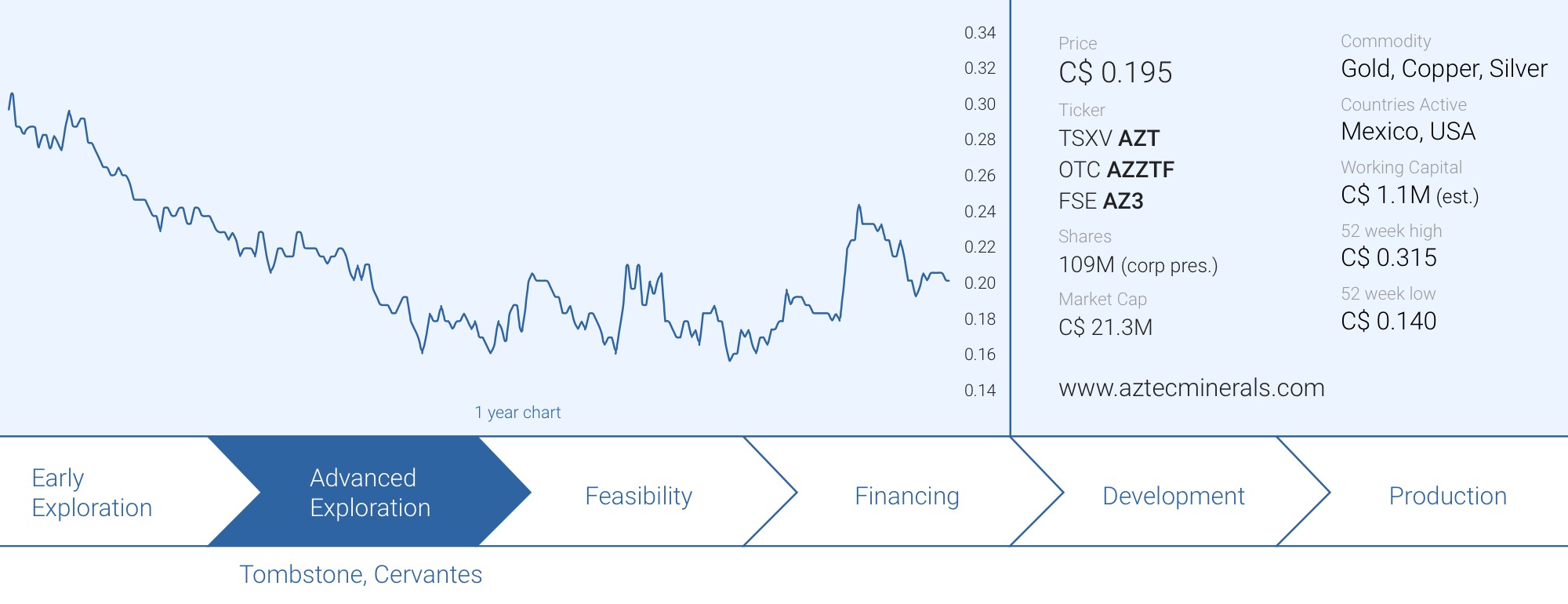
In April, we visited Aztec Minerals’ (AZT.V) Tombstone gold-silver project in Arizona. Whereas the company’s focus was dedicated to the Cervantes gold project in Mexico’s Sonora state in the past few years, it looks like 2024 will be Tombstone’s year to be in the spotlights.
And deservedly so. Drill on this past-producing mine encountered several high-grade gold and silver assay results, and the company’s technical team has outlined an exploration program that could hopefully result in a maiden resource calculation with sufficient ‘critical mass’ to consider moving the project forward as a heap leach operation, which traditionally has low capital and operating expenditures.
On the visit, we were accompanied by CEO Simon Dyakowski and Allen David Heyl, the company’s VP of Exploration. Aztec owns a 75% stake in Tombstone, while a group of private investors from the US East Coast owns the remaining 25%.
As a reminder, the Tombstone project was mainly mined in the late 1800s and early 1900s with an estimated silver production of 32 million ounces while an additional 250,000 ounces of gold were recovered as well. This is not greenfields exploration; Aztec is going back to a known mining district.







Access to the property and existing infrastructure: excellent
Even when one is well-prepared, seeing how well-connected certain projects are still amazes. And the Tombstone project in Arizona definitely falls in that category. The project can be reached by a very smooth 2.5 hour ride from Phoenix, and about 45 minutes to an hour from Tucson and both cities obviously have sizeable airports. Highway 10, which has multiple lanes, connects both cities with Benson where after Arizona State Route 80 takes you straight to Tombstone. As Phoenix for instance has two direct flights to London on a daily basis, while Tucson has connections to the airlines’ main hubs all over the USA, it’s a very well-located project.
Tombstone itself is an interesting little town that thrives on tourism and wants to ‘experience’ the old westerner days in the area. Other than that, it really is a ‘sleepy’ town (in a good way) but much to our surprise, you couldn’t even notice the Contention pit at all, although the pit outline almost reaches the downtown area of Tombstone.
That was a positive surprise, as it could help convince the locals that a potential mining operation makes sense. Of course, Aztec (or anyone developing the project) would have to take very specific measures regarding noise and dust, but the current operations are well-shielded from the local community.
So, from an accessibility and infrastructure point of view, Tombstone gets our thumbs-up.
Another interesting feature of the project is the ongoing quarry operation. Last year, Aztec Minerals and its 25% partner signed an agreement with a local contractor to use a portion of the land package as a quarry mine, producing aggregate. That aggregate is used for several construction projects in the area, and allowing a third party to mine the rock has three benefits to Aztec Minerals.


First of all, it the aggregate mining operations basically act as a ‘pre-stripping’ operation. The area the contractor is currently working on could be an extension of the Contention pit and mining, processing and shipping the aggregate means the top layer of this area is being mined and transported.
Secondly, Aztec is making good money on the aggregate sales. The contractor is taking care of the mining and shipping portion of the aggregate mine and it pays a royalty to the owners of the Tombstone project. In the recently filed financial statements for the financial year 2023 the royalty income from aggregate sales represented C$147,000. Considering the aggregate sales only started last summer, this is a nice side hustle for Aztec as the incoming cash flow takes care of a portion of the G&A of the company. We are already looking forward to seeing how much revenue Aztec generated in the first quarter of this year. As this is not a core operation for the company, Aztec does not book this as a revenue but it is shown on the income statement as an ‘other income’.
And finally, although a small-scale mining operation can’t be compared to what a traditional heap leach mine could look like should the Tombstone project ever be developed, it does ‘prepare’ the local community for resumption of larger scale mining activities in the vicinity to the town.







The exploration plans for Tombstone
Although we were talking about potential mining activities in the previous section of this update, we would like to remind investors the Tombstone project currently doesn’t have a NI43-101 compliant resource estimate and our referral to a mining scenario should be taken with a grain of salt. Of course, it is the company’s ambition to reopen this past-producing mine (preferably as a low-capex heap leach operation), and we wanted to discuss some issues that are per definition popping up when discussing a mine restart.
Earlier this quarter, Aztec provided an exploration update on its Tombstone project in Arizona (where documented historical production totalled 32 million ounces of silver and 250,000 ounces of gold). The company has now reviewed the previous drilling and surface exploration data and is now in the final stages of developing new drill targets for the project. The low-hanging fruit would be to continue to expand the gold-silver oxide mineralization near the historical Contention Pit and get the company (and project) in a position to consider working on a resource calculation.
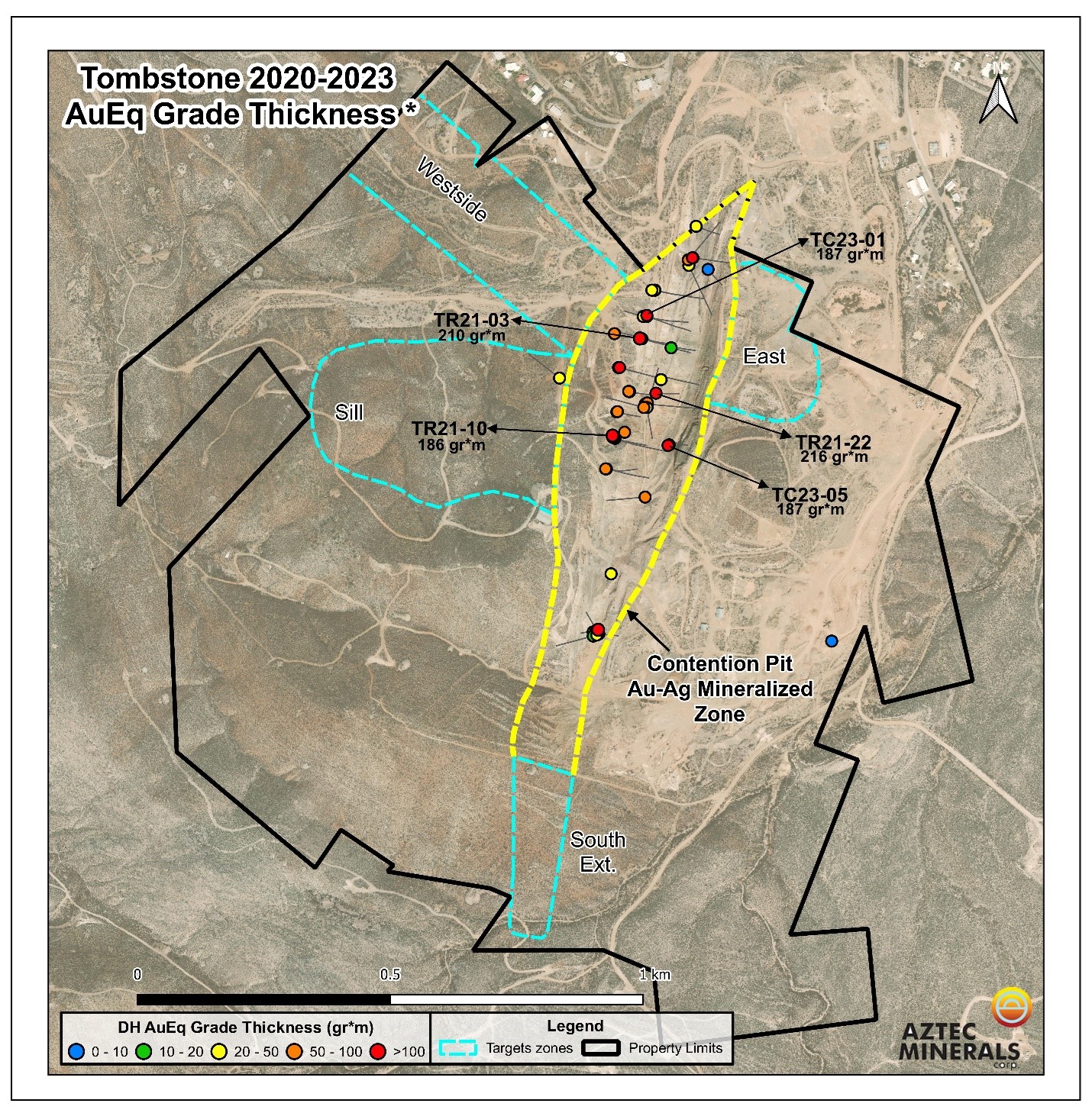
Previous drill results have indeed encountered thick layers of oxide mineralization with some excellent grades with, for instance, 125 meters of 1.63 g/t gold-equivalent, 96 meters of 2.2 g/t gold-equivalent, and ‘shorter’ but higher-grade intervals like 32 meters containing 6.28 g/t gold-equivalent. And just to give you a better overview of last year’s drill results, although drilling conditions weren’t easy due to the presence of underground mine workings (most of the holes the company drilled encountered old stopes with some of those stopes going back to the late 1800s), no holes were lost.
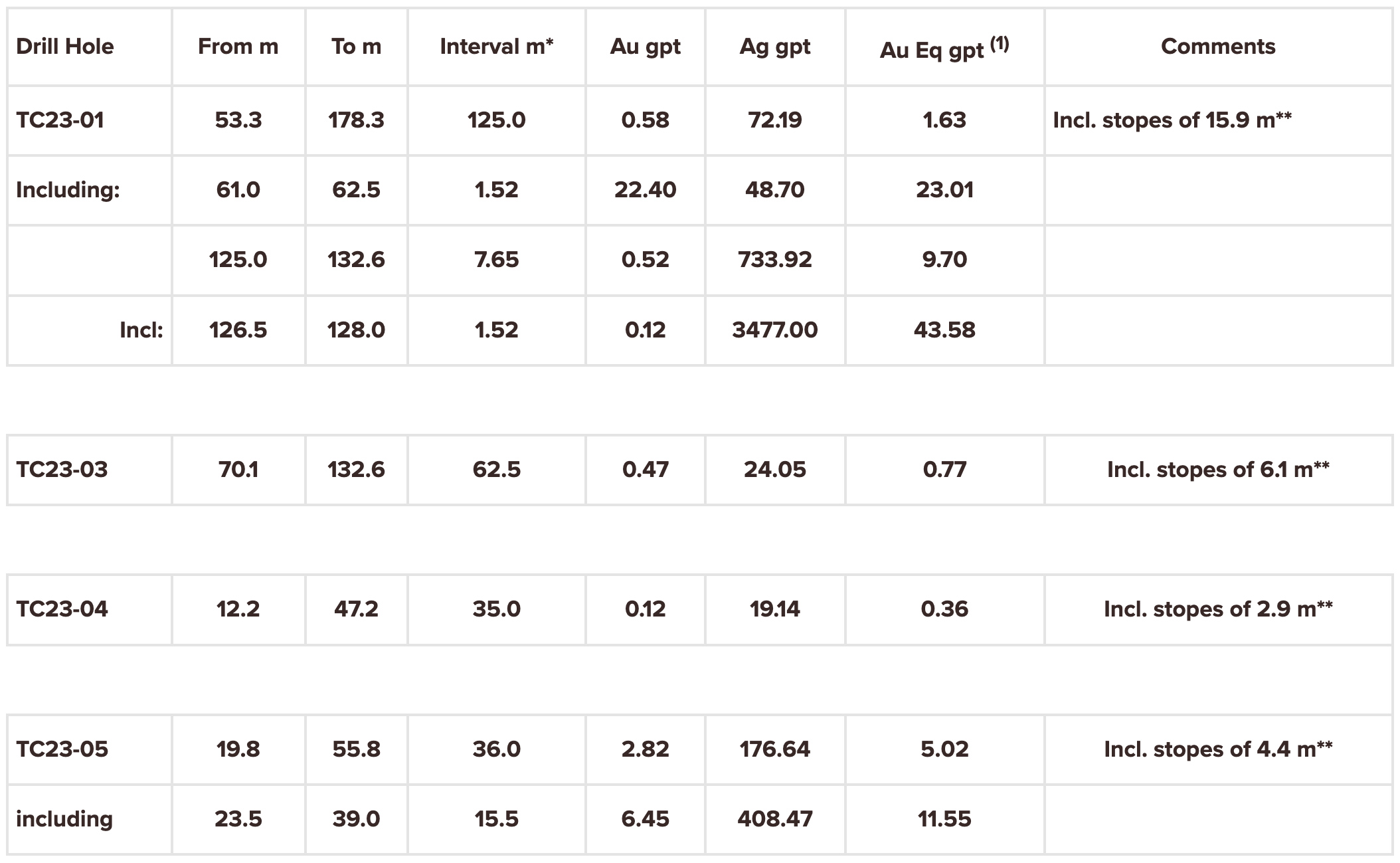
Hole 4 is relatively uninspiring with 35 meters containing 0.36 g/t AuEq (consisting of 0.12 g/t gold and the remainder coming from the 19.14 g/t silver credit), while hole 3 was already quite a bit better with 62.5 meters of 0.77 g/t gold-equivalent (including 0.47 g/t gold and 24 g/t silver). But the real barn-burner and the hole that allowed Aztec to write a nice title for its press release is hole 5.
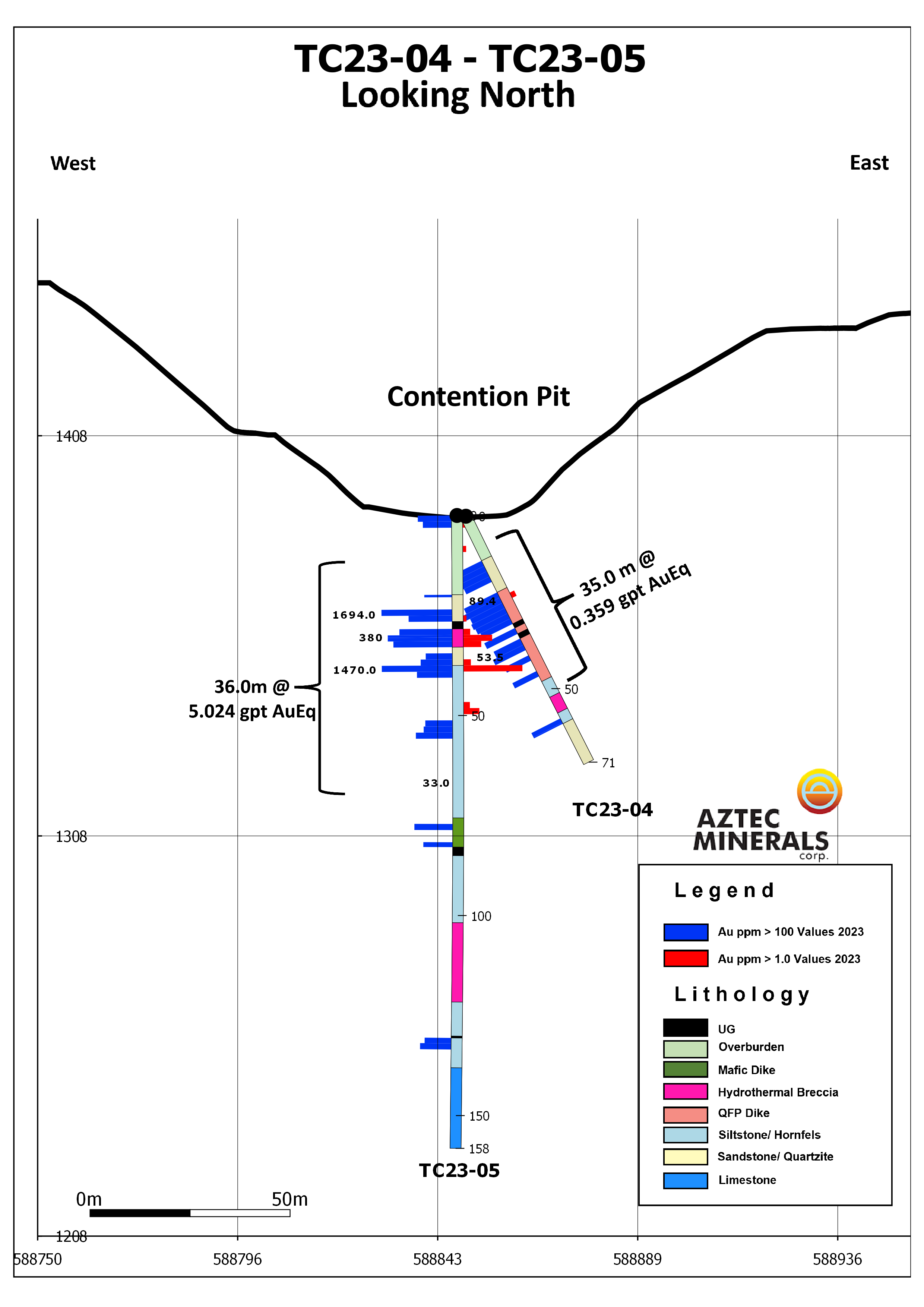
That hole encountered 36 meters of 5.02 g/t gold-equivalent (consisting of 2.82 g/t gold and 176.64 g/t silver) including a higher grade zone of 15.5 meters of 11.55 g/t gold-equivalent (with 6.45 g/t gold and 408.47 g/t silver). Hole 5 was drilled as a vertical hole starting at the bottom of the southern portion of the main Contention pit, near the second level of the underground mine. All mineralization appears to be oxidized but this shouldn’t be a problem considering the silver leaches well with historical recoveries in the 60% range for silver and high 70% range for gold. Additional met work may further boost the recovery rates and we expect Aztec to spend some time on metallurgical test work further down the road.
Last year’s drill results were very encouraging, especially considering the difficult drilling conditions. VP Exploration Heyl was pretty ‘cool’ about it and said they were lucky, but truth be told, it speaks volumes that all (100%) of the completed holes encountered gold and silver mineralization at and around the Contention Pit. That’s important. The old-timers were mining the higher grade mineralization but the ‘invisible’ lower grade oxidized material could be of interest to any open pit heap leach specialist, and that’s exactly what Aztec Minerals is going after.
Keep in mind that the 2023 Tombstone drill program consisted of just 7 holes and focused on figuring out the mineralization along the step-outs of the Contention Pit (over a 900-meter length) and increasing the volume of the mineralized area. Based on the strong drill results, we dare say that was a success.






The question now obviously is ‘what’s next?’
The company has now reviewed all data for Tombstone and has come up with some high-priority zones that should positively impact the project’s overall value. Back in 2023, Aztec Minerals acquired the Westside claim, which originally was the area the previous mine operator wanted to pursue an expansion on. According to the historical data Aztec had access to, about 40 years ago, the area below was earmarked as the next phase of the mine plan at Tombstone.
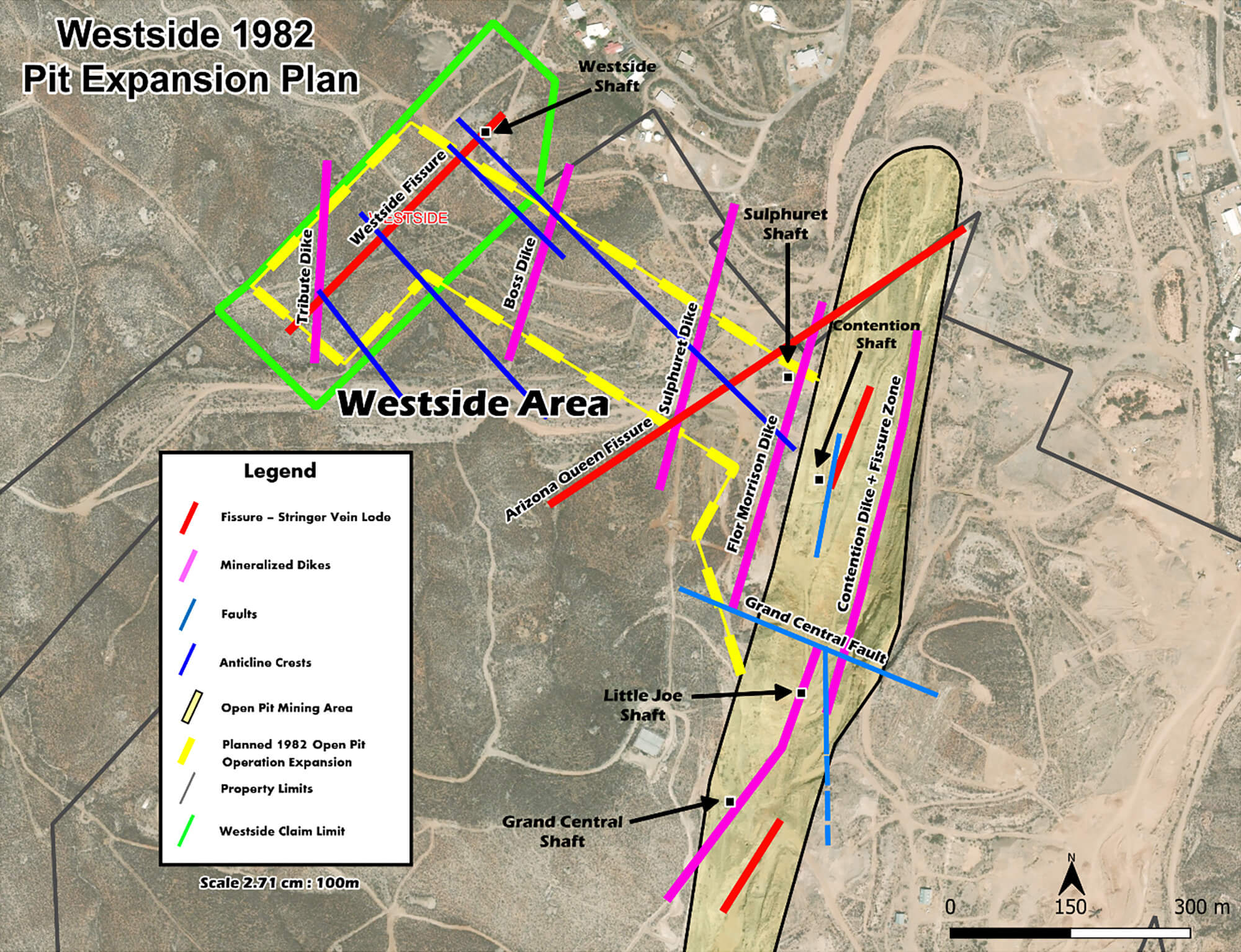
Needless to say this has now become a high-priority target for Aztec. If the previous operator in the 1980s was confident enough to define this area as a mining zone, it must have had its reasons to do so. Unfortunately Aztec Minerals does not have access to the historical data the previous operator was basing its decisions on and that’s why the Westside target ranks pretty high on the company’s to do list.
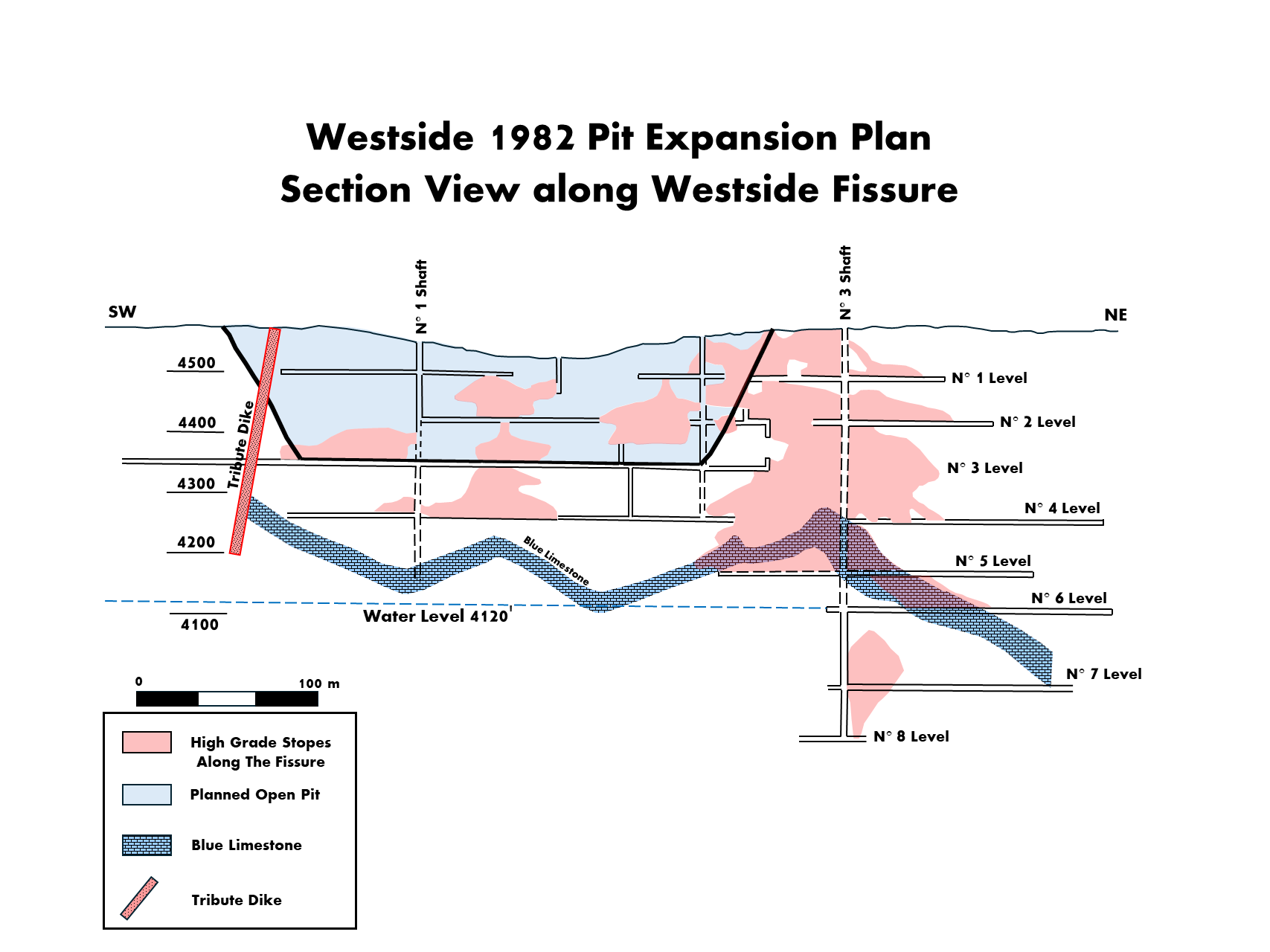
While we are mainly focusing on the gold and silver in the oxidized zones, it’s worth mentioning the Tombstone project hosts CRD potential at depth. Even on the Westside area, which has remained virtually untouched for about 40 years, previous operators encountered CRD style mineralization at a depth of 500-700 meters.
It’s expensive to drill holes that deep. The low-hanging fruit is obviously further expanding the volume of oxidized material while the company gains a better understanding of the CRD potential below the oxidized zones.







Conclusion
2024 will be a busy year for Aztec. The company is currently refining the drill targets to narrow down the list to the areas that could have the highest impact on the project’s potential. Cash is still tight for Aztec but hopefully the current strong gold and silver price will help to drum up interest in this ‘forgotten’ project. Interestingly (and surprisingly) the silver leached well historically, which further lends credibility to the company’s focus to look at Tombstone as a potential heap leach operation.
We expect the company to announce more detailed plans sooner rather than later. We came away with a very positive impression of the access to existing infrastructure, while the accessibility of the Tombstone project is likely one of the best we have ever encountered.
Disclosure: The author has a long position in Aztec Minerals; Aztec Minerals is a sponsor of the website. Please read our disclaimer.

Excellent report. Very Indepth. Thank you